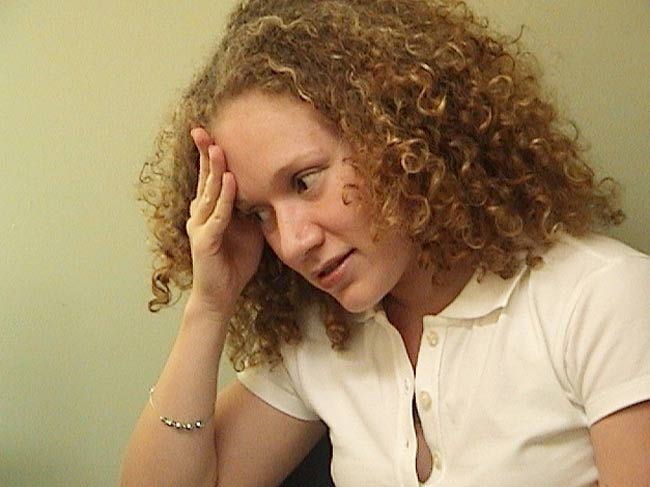To Stave Off Panic, Don't Take a Deep Breath

A new treatment for the feeling of suffocation that accompanies a panic attack focuses on getting patients to breathe less.
The treatment, which involves a technique for altering your breathing, is more effective at alleviating both short-term panic disorder symptoms and hyperventilation than traditional psychological therapy, and it may make people less prone to panic attacks in the first place, said study leader Alicia Meuret of Southern Methodist University in Dallas.
The treatment is called capnometry-assisted respiratory training, or CART.
"In a certain way, CART was superior because it was changing the psychological symptoms and the abnormal physiological state," Meuret told LiveScience.
Take a shallow breath
Panic disorder is characterized by sudden, reoccurring bouts of terror coupled with physical symptoms such as a racing heartbeat, sweaty palms and hyperventilation. According to the National Institute of Mental Health, 6 million American adults have panic disorder.
Panicking people are often told to calm down and "take a deep breath," Meuret said. But for someone hyperventilating during a panic attack, deep breathing is a bad idea. That's because hyperventilation happens when people breathe so quickly and deeply that they expel an unusually high amount of carbon dioxide, which in turn causes symptoms like dizziness and numbness. Those symptoms tend to make people feel like they're suffocating, so they breathe quicker and deeper, further exacerbating the problem. [Read: Brain Cells That Help Us Breathe Revealed]
Sign up for the Live Science daily newsletter now
Get the world’s most fascinating discoveries delivered straight to your inbox.
"It's not because they have a lack of oxygen, it's because they're exhaling too much air," Meuret said, adding, "'Take a deep breath' is not a helpful instruction."
Many therapies focus on getting patients to breathe slower, she said, but slow breathing may not help alleviate hyperventilation if patients are still breathing deeply. The new CART therapy, reported in the October issue of the Journal of Consulting and Clinical Psychology, uses biofeedback to teach patients to take shallow breaths to ease panic symptoms.
Easing hyperventilation
Meuret and her colleagues recruited 41 people with panic disorder and agoraphobia, a condition in which people fear having a panic attack in a place where they couldn't get help. The patients were randomly assigned to either four weeks of twice-daily sessions of CART or cognitive training.
The cognitive-training patients spent 17 minutes twice a day analyzing the catastrophic thoughts associated with their panic attacks. The CART patients spent the same amount of time learning to alter their breathing while using a capnometer, a device that measured their carbon dioxide levels, oxygen levels, heart rate and breathing rate. Portable capnometers are normally used by paramedics at emergency scenes, but in this case, the researchers used them to give patients feedback on their breathing.
The cognitive-training patients also had their physiological measurements taken with a capnometer, but they did not see or discuss the results.
In both groups, general panic symptoms (such as heart palpitations and trembling) and panicky thoughts went down, and the participants felt more in control. But only CART sessions reversed hyperventilation and the physical symptoms that accompany it, such as dizziness, shortness of breath and feelings of suffocation. This is the second randomized trial, meaning participants are randomly assigned to one treatment or the other, to show CART's effectiveness, and researchers are now following up to see how the treatment works in the long term.
The treatment works by normalizing the baseline levels of carbon dioxide in the blood, Meuret said, making people less prone to hyperventilation and giving them the tools they need to reverse an attack. (Individuals only need to use the capnometer in the training phase of the treatment.)
"It's very challenging for patients to learn not to breathe deep, because they're feeling sort of breathless," Meuret said. "Patients really need that feedback of carbon dioxide and, ideally, also of oxygen just to confirm to them that the symptoms are not due to suffocation."
- What Really Scares People: Top 10 Phobias
- 10 Things You Didn't Know About You
- Top 10 Controversial Psychiatric Disorders
You can follow LiveScience Senior Writer Stephanie Pappas on Twitter @sipappas

Stephanie Pappas is a contributing writer for Live Science, covering topics ranging from geoscience to archaeology to the human brain and behavior. She was previously a senior writer for Live Science but is now a freelancer based in Denver, Colorado, and regularly contributes to Scientific American and The Monitor, the monthly magazine of the American Psychological Association. Stephanie received a bachelor's degree in psychology from the University of South Carolina and a graduate certificate in science communication from the University of California, Santa Cruz.









